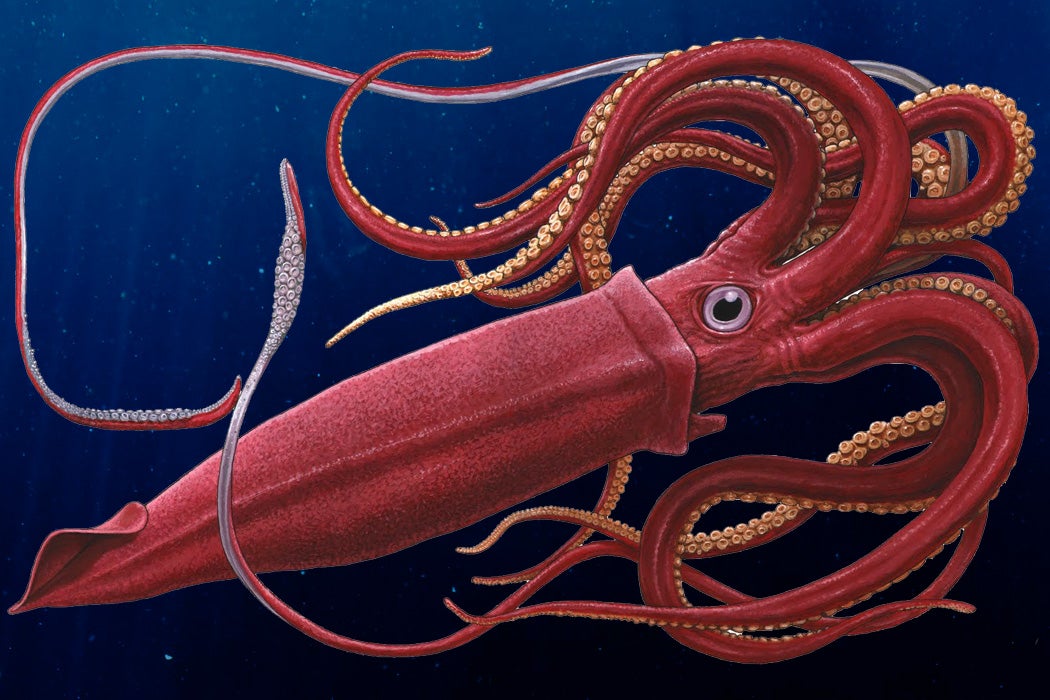An amazing and eerie video has been making the rounds. In the video, shot deep in the Gulf of Mexico, what appears to be an elongated object reaches out of the gloom toward a glowing lure placed by researchers. The creature spreads out into a set of probing tentacles before it vanishes back into the blackness. The ten-foot-long giant squid was a small one, just a juvenile, but it still dwarfs any squid found closer to the surface. The size difference is part of a pattern: in many cases, deep species tend to be much larger than their shallow-dwelling relatives. Why do some deep sea organisms grow so large?
In a 2006 study, biologist Craig R. McClain et al. examined the gradient from the shallow seas to the depths using the framework of a terrestrial system, oceanic islands. Islands, isolated from other landmasses, mostly develop indigenous biodiversity through diversification of the few organisms that arrive there. Limited in resources, competitors, and predators, island fauna often follow what is known as the Island Rule, where small-bodied organisms tend to grow larger on islands, as is the case with the enormous Galapagos tortoise. The deep sea also has limited resources and is isolated from the rest of the ocean. Following a mass extinction event during the Cenozoic, much of the deep sea fauna diversified from shallow water immigrants. In short, according to McClain et al., the deep sea is functionally similar to an island.
Comparing gastropods (the group of mollusks including snails and slugs) across different depths, the group concluded that many deep sea taxa do indeed follow the Island Rule. One of the tiniest gastropods, a relative to a large surface species, dwells in the deep sea. But there are also huge deep sea species analogous to smaller shallow varieties, such as the giant deep sea isopod, a weird lobster-sized organism in a group that rarely exceeds an inch or two in the shallows.
Weekly Newsletter
McClain et al. propose that overall the trend is a result of the reduced resources that are available in the deep sea. Since the majority of resources in the deep ocean result ultimately from productivity in shallow water, a lot of energy is lost on the trip down. With very limited local productivity, resources in the deep sea are reduced. For gigantism, the researchers propose that limited resources select for larger body sizes that can better withstand periods of famine or ability to cover larger distances in search of scarce prey. Other researchers suggest that in the absence of many predators capable of feeding on larger organisms, there is an evolutionary opening for larger body sizes. (The most dangerous predator of squid, the sperm whale, has to travel from the surface to feed on them.) The cold temperatures in the deep ocean encourage slower growth, which can also contribute to larger body sizes. But whether small or large, evolution is selecting for the best-adapted body size to survive in the inky depths.







